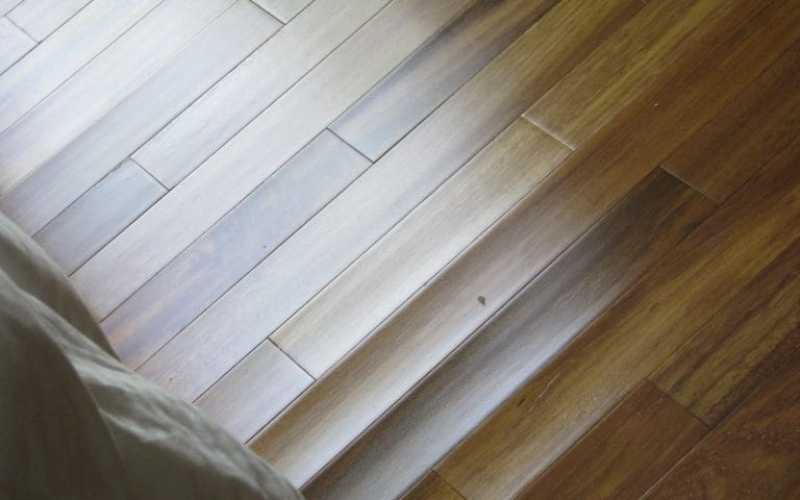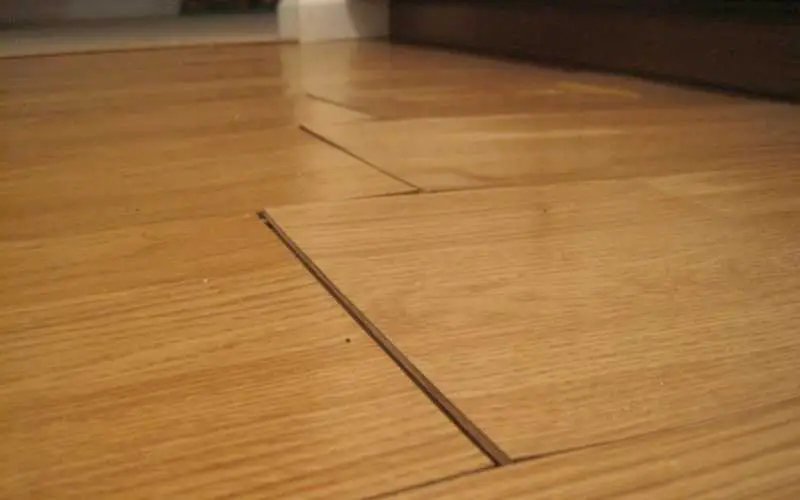Laminate flooring is one of the simplest flooring choices to install for a do-it-yourself remodeler. There are so many designs of laminate floors that have the appearance of hardwood flooring at a fraction of the price.
Sometimes laminate floors start to lift in the middle due to poor installation process, an uneven subfloor, and moisture damage.
This is exactly why we are interested in how to fix laminate flooring that is lifting. To fix a lifting laminate floor, remove the baseboards to relieve the pressure. Then gently tap the boards back together until the gaps are filled.
Why Is My Laminate Flooring Lifting?
Table of Contents
If your laminate planks are lifting, it could be caused by one of the following factors:
1. An Uneven Subfloor.
If you lay laminate flooring on an uneven subfloor, some planks will likely lift over time. This occurs as a result of constant walking on the surface, resulting in weight pressure that causes the floorboards to shift, rise, or bounce.
2. Moisture Damage.
Laminate surfaces, like wood flooring, are susceptible to moisture damage. Laminate floors are more susceptible to lifting when the sub-floor is constructed of concrete.
As we all know, concrete is a rather porous building material which means that moisture damage in laminate floors is more significant when the sub-floor is constructed of concrete, and there is no underlayment.
As water penetrates into the laminate planks, they begin to swell, causing them to lift and drift.
Read: pros and cons of waterproof laminate flooring
3. There Are No Expansion Gaps.
Typically, tiny gaps are left at the margins of laminate flooring (or other similar types of flooring such as solid wood and engineered hardwood) during installation to allow for swelling and shrinking of the planks when room temperatures and humidity fluctuate.
If your laminate floorboards were not put with an expansion space around the perimeter, they are more prone to lift in the future.
4. Installation of laminate Floors in the Wrong Areas
Installing laminate floorboards in places where moisture damage is likely, such as kitchens, bathrooms, and indoor pool rooms is the last thing you want to do.
Furthermore, if your heating system is situated beneath your flooring, you should consult with your laminate floorboard supplier to confirm that their product is appropriate for installation in such regions.
Read: How to protect wood floor
How to Fix Laminate Flooring that is Lifting
As examined above, laminate floors can lift for a variety of reasons. Before you can fix them, you must first identify the root of the problem and then take appropriate action. Below are some of the ways to fix a lifting laminate floor
1. Examine for Potential Water Damage
If your flooring has swelled, it is most likely due to water absorption. Examine your walls and flooring for suspected water leaks. If you are not an expert in these areas, you should seek professional assistance.
Moisture can leak from your subfloor if it is composed of cement and contains water pipes. Install a water barrier above the subfloor to keep vapor away from your laminate flooring.
Water-resistant glues can also be used in the cracks of your flooring to prevent water from seeping in. This is useful in areas where water is likely to come into touch with the flooring, such as kitchens.
Read: How to fic swollen laminate floor
2. Floatation System and Expansion Gap
Restriction in floating and expansion can be a cause of lifting laminate floors, as outlined above.
To fix this, a correct distance between the walls and your flooring is required. There should also be enough space between the flooring and the lower moldings.
Increasing the space between the flooring and the walls is a simple fix. This prevents your boards from lifting over each other even if they expand.
3. Install Your Flooring Correctly
Lifting issues can be considerably eliminated by properly installing laminate flooring. The methods are simple, but you should seek professional assistance if you have never done this before.
To begin, remove the baseboards from around the room and clean the floor. Check to see if the subfloor is completely flat. If not, make an effort to level it with proper means.
Place a layer of foam over your subfloor to allow for floating. It is also advised to install a vapor barrier. Begin arranging the boards in a row until you reach the opposite end.
Read: How long does laminate flooring off gaslaminate
Conclusion
Most often than not, you will probably need the assistance of a professional to fix lifting laminate floors.
Remember that your laminate floors are probably lifting as a result of improper installation. You don’t want to add to the problem now, do you?
We hope this post on how to fix laminate flooring that is lifting will give you an idea of why your laminate flooring is lifting.

